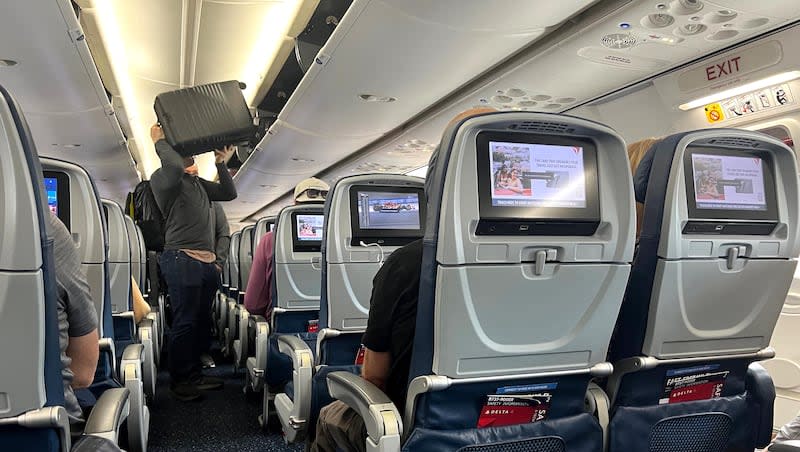How to beat jet lag

The best way to minimize the symptoms of jet lag? Start your preparations early.
Changing some of your behaviors before your departure, or during your flight, can help you adjust to a new time zone or recover from a red-eye flight.
If you haven’t had the chance to prepare in advance, don’t worry! There are some additional tips below to help you quickly overcome jet lag once you’ve arrived at your destination.
Before the flight
You can start preparing for a trip as soon as you start researching it. You might need to start some of these tips a week to a month in advance.
Book a flight without layovers
If you can, opt for a direct flight to minimize jet lag caused by crossing multiple time zones. Layovers, and especially long ones, mean extra time zones to adjust to, which can heighten jet lag symptoms, per Kayak.
Gradually adjust your schedule before you leave
According to Mayo Clinic, when traveling eastward, attempt to move your bedtime one hour earlier each night beginning a few days prior to departure.
If you’re heading west, on the other hand, aim to go to bed one hour later for several evenings before your flight, per Mayo Clinic. Also try to align meal times closer to those of your destination.
If traveling somewhere where the time difference is large, you may want to adjust your bedtime by more than one hour.
Get plenty of sleep beforehand
If you’re unable to change sleep times, Mayo Clinic recommends that you at least get good rest before your trip. Jet lag is worse when you are already sleep deprived.
During the flight
No matter how long a flight lasts, there are still some things you can try to help get over jet lag before you set foot in your destination.
Sleep on plane when you would sleep at your destination
Similar to adjusting your bedtime before your flight, Mayo Clinic recommends sleeping on the plane when it would be time to sleep at your destination.
Per National Geographic, use noise-canceling headphones, an eye mask, a neck pillow or whatever you can to make the trip as comfortable as possible to be able to sleep. Take melatonin if necessary.
Properly time bright light exposure
Adjusting to different time zones involves managing light exposure. When traveling west, expose yourself to evening light to adapt to a later time zone, and when traveling east, expose yourself to morning light to adjust to an earlier time zone, according to Mayo Clinic.
Hydrate
Airplane travel often leads to dehydration because of the low humidity levels in the cabin, per Kayak.
Try to stay hydrated by bringing your own water bottle or drink the complimentary water.
While at your destination
Jet lag doesn’t have to last your whole trip. Try some of the tips below to help.
Stay on your new schedule
According to Mayo Clinic, it’s recommended to adjust your watch or phone to the new time zone before departing or as soon as you reach your destination.
To help you get through the day — especially if you’re tired and have already tried caffeine — try eating food or exercising to help your internal clock change. Naps are okay as long as you don’t go over 20 minutes, per NPR.
Don’t extend yourself on the first day
Avoid pushing yourself excessively on your first day in a new time zone, as it may cause fatigue and disrupt your adjustment to the place. Instead, prioritize finding opportunities to rest and rejuvenate to help facilitate a smoother transition, per Kayak.
Go through your home bedtime routine
To ease the transition into sleep and signal to your brain that it’s time to wind down, attempt to replicate your usual bedtime routine wherever you’re staying on vacation. The familiarity can help facilitate relaxation and prepare your mind and body for sleep, according to Kayak.
If you want to create your own bedtime routine before a trip, here are some options that have helped my family and friends go to bed faster if practiced regularly:
Listening to the same white noise each night: Static, waves or rain.
Meditating at a regular time.
Studying or journaling before bed.
Staying away from bright light, specifically phones, an hour before bed.

